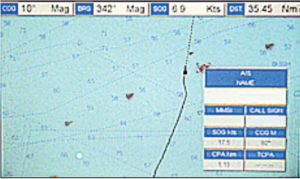The Charity
Aviation
Maritime
Disregards for COLREGS sailing vessel

Initial Report
Report Text:
We were sailing from Cherbourg to Southampton via the Needles on a 10 metres sailing yacht equipped with an AIS (Automatic Identification System) transponder and active radar reflector. Visibility was about 4 miles, our speed about 8 knots. As we crossed the eastbound shipping lane, several AIS targets were approach ing on the port side and eventually became visible. One was of concern because the closest position of approach (CPA) was almost zero. The speed of this ship, the xxxxxxx, was about 18 Knots. After monitoring the situation for some time, I called up on VHF radio and informed the crew who answered, that according to our AIS our CPA was near zero. The response was ‘I agree’. I then asked if he planned to alter course to avoid risk of collision and he replied in the negative.
I politely pointed out that we were a sailing vessel and the stand on vessel under the Collision Regulations and asked once again if he would alter course. The reply was ‘I could do but I’m not going to’. I decided at this point that further discussion was unlikely to be productive, ended the conversation and instructed the helm to turn 20 degrees to port and harden up the sails. This allowed us to pass behind the ship by a safe distance.

Lessons Learned: Do not assume that another vessel will take avoiding action even if it is aware that a risk of collision exists.
CHIRP contacted the ship’s manager who forwarded the information to the ship and subsequently discussed the report when the superintendent visited the ship.
Unfortunately the crew had changed before the report had been received by the ship. The Master appreciates CHIRP publications and the in depth analysis of dangerous situations but after several months it was difficult to reconstruct a specific situation. The master stated the use of VHF unfortunately causes confusion a lot of the time. The superintendent visited the ship whilst in Europe to discuss the report but the relevant person was no longer on board. However, they found that the ship had been at the mentioned position at the time stated in the report but the model of the Voyage data recorder on the ship does not record VHF conversations.
CHIRP Comment
The use of AIS is useful for the identifica – tion of a ship, but is not recommended for collision avoidance. AIS measures speed and course over the ground and not through the water. The refresh rates for AIS also need to be considered. For AIS class A, between 2 and 10 seconds depending on vessel speed and for AIS class B every 3 minutes where speed over ground is less than 2 knots, or every 30 seconds for greater speeds. The Yacht skipper is complemented for the actions taken and the ship manager for investigating the report onboard.







